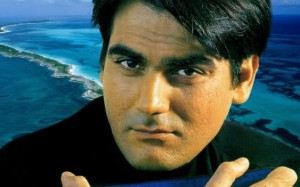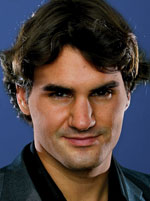This is something I have wondered about for a long time. With the ascent of Roger Federer the debate about the Greatest of All Time (GOAT) has been full-blown and passionate. However, why is it that there is no debate talking about women? I am not talking about a unisex comparison, because that is more difficult to do, but in general, why is it such a big deal when a man completes a career Grand Slam, while there are three women who have completed calendar Grand Slams? (To be fair there are two men who have calendar Grand Slams as well)
Take a look at some statistics:
- Margaret Court and Steffi Graf each have more than 20 Grand Slam singles titles. Court has 24 and Graf has 22. Other players like Helen Wills has 19, while Martina Navratilova and Chris Evert each have 18. By contrast, among men Federer and Sampras have 14 (Wimbledon 2009 is on as I write this), Roy Emerson has 12 and Rod Laver and Bjorn Borg have 11 each.
- If you consider doubles and mixed doubles titles too, the margin becomes a gaping chasm – Court shoots to a humungous 62, Navratilova has an almost as high 59 (and she is still playing!) and Billie Jean King has 39. If you combine the lists across the two genders, the first man would be Roy Emerson at #9, with 28 titles.
- Donald Budge was the first man to win all 4 singles titles at the Grand Slams in one year (1938). Rod Laver followed him by repeating the feat twice. Laver first won as an amateur in 1962, then as a professional in 1969 and remains the only male player to win a calendar Grand Slam in the open era. Others like Fred Perry, Roy Emerson, Andre Agassi and Roger Federer did win all four titles, but not in one year. On the women’s side, however, Maureen Conolly, Margaret Court and Steffi Graf have all completed calendar Grand Slams, in 1953, 1970 and 1988 respectively. In addition several women have career Grand Slams – Chris Evert, Martina Navratilova, Billie Jean King, Serena Williams, Doris Hart and Shirley Fry.
- Statistically speaking Margaret Court was exceptional in her career – she had won a “boxed set” (career Grand Slams in Singles, Doubles and Mixed Doubles) twice – once before the Open Era and once during. Doris Hart and Martina Navratilova have their own boxed sets, but only once. No male player holds this distinction.
- Steffi Graf is the only player to have won singles titles at all four Grand Slams at least four times each. She also spent 377 weeks at #1 – 91 weeks more than Pete Sampras.
- Althea Gibson was the first African-American, male or female, to win a Grand Slam (French 1956, Wimbledon 1957 & 1958, US 1957 & 1958). Yet the stadium got named after Arthur Ashe. This isn’t to demean Ashe – he was a great player in his own right with three Grand Slams and a pioneer with his social efforts.
I agree that people like Federer and Laver represent a perfectly orchestrated symphony, that the men’s game of 5 sets is more physically taxing, that most top men would whip the top women players of their time (I don’t say “all” because of Billie Jean King’s famous whipping of Bobby Riggs) and that Roger Federer is one of the most statistically impressive players ever. But somehow I feel that women have been shortchanged in GOAT discussions. Maybe we should start calling it GMOAT, just to be specific. Maybe we should start giving Wonderwoman too some credit, just like Superman.
Update on 5th July 2009: Roger Federer has now added Wimbledon 2009 to his collection, raising the total Grand Slams to 15 – the highest among men.

